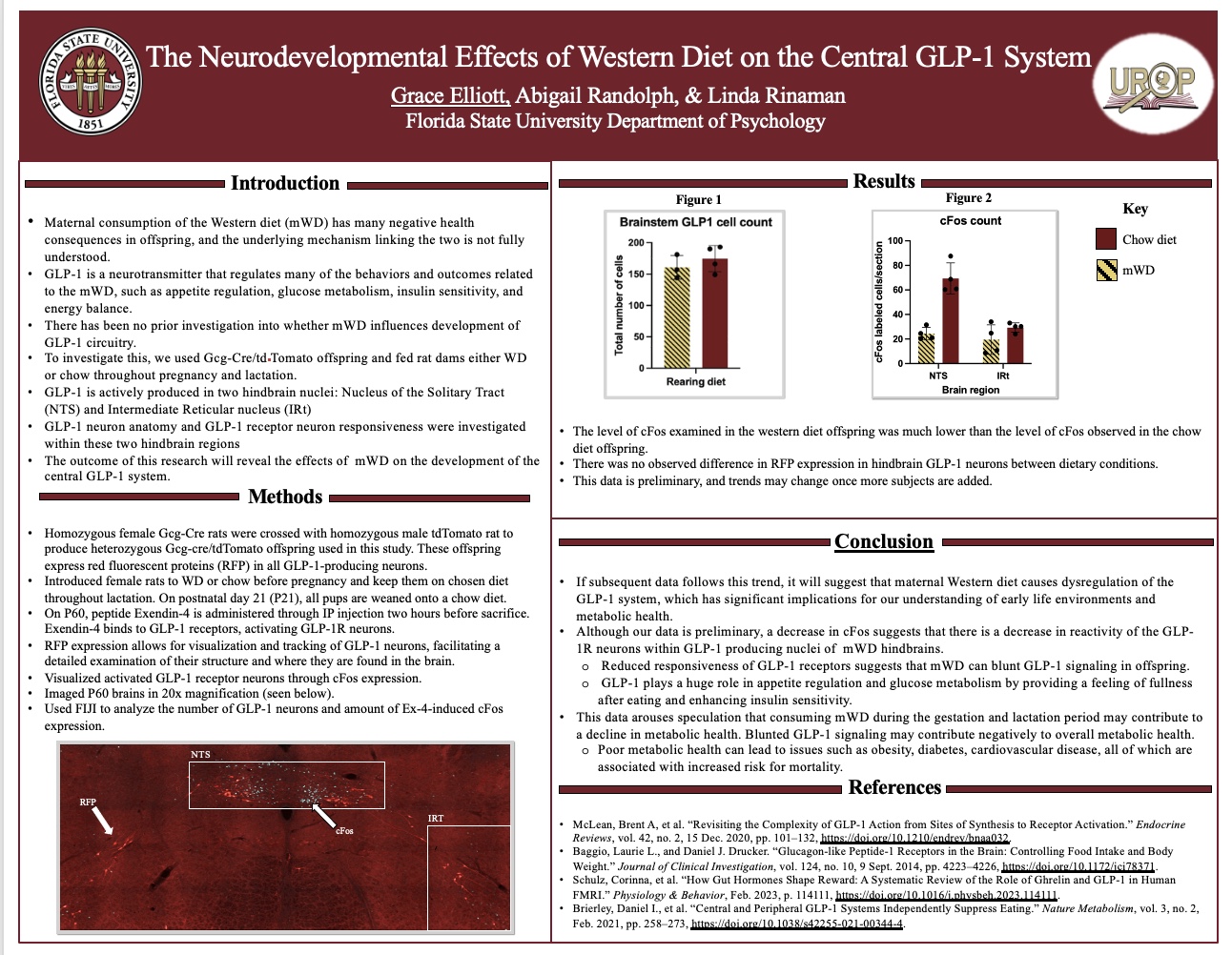Research Symposium
24th annual Undergraduate Research Symposium, April 3, 2024
Grace Elliott she/her Poster Session 4: 2:45 pm - 3:45 pm /184

BIO
I am a second-year behavioral neuroscience major from Tarpon Springs, Florida. I am deeply interested in neuroscience research because of the brain's complexity and the endless possibilities for discovery within this field. I plan to pursue a Master's degree in anesthesia and become a Certified Anesthesiologist Assistant (CAA) after my undergraduate studies.
The Neurodevelopmental Effects of Western Diet on the Central GLP-1 System
Authors: Grace Elliott, Abigail RandolphStudent Major: Behavioral Neuroscience
Mentor: Abigail Randolph
Mentor's Department: Psychology Mentor's College: Florida State University Co-Presenters:
Abstract
Maternal Western diet, consisting of foods rich in sugar and fats, has been linked to negative health outcomes in offspring. The process connecting this diet to these disadvantages is not fully understood. A possible link between them is glucagon-like peptide-1 (GLP-1). In the brain, GLP-1 acts as a neurotransmitter that regulates many of the behaviors and metabolic health outcomes associated with maternal Western diet (mWD). Our research aims to determine if the mWD impacts the development of the central GLP-1 system in rat offspring. Using female Gcg-cre rats and male tdTomato rats, we obtained Gcg-Cre/tdTomato offspring, where red fluorescent protein (RFP) indicates GLP-1-producing cells. In our mWD paradigm, dams were introduced to either WD or chow prior to pregnancy and throughout lactation. All pups were weaned onto a chow diet postnatal 21 (P21). At P60, rats were injected with Exendin-4, a peptide that binds to GLP-1 receptors (GLP-1R) and activates GLP-1R neurons. Using immunohistochemistry, the brains of offspring were labeled for RFP and cFos. CFos is a gene used as an indicator for neural reactivity within neurons, revealing Exendin-4 responsive neurons. We then took pictures and analyzed the offspring’s hindbrain to investigate the difference in RFP or cFos expression between diets. This ongoing research aims to uncover how mWD exposure influences the anatomy of GLP-1 projection neurons and cFos expression in response to Exendin-4. Any differences observed in GLP-1 circuitry could suggest a role for GLP-1 in negative health outcomes associated with mWD, warranting further investigation into underlying mechanisms.
Keywords: GLP-1, metabolic health, maternal western diet


